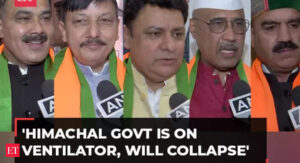‘Right to Protest’ will probably be revisited by the Supreme Court and the result will not be good for Islamoleftists
4 min readSupreme Court is about to put in writing a brand new chapter within the historical past of protests in India. Amid rising issues about rising developments of ‘professional protesters’ and nuisance attributable to them, the Supreme Court has determined to revisit the ‘Right to Protest’.Of late, extended protests directed on the Modi authorities have grow to be a go-to possibility for Islamoleftists and the opposition to bake their political bread. The Shaheen Bagh protest towards the CAA (Citizenship Amendment Act 2019) ate up disinformation and lasted months till it culminated into the Delhi Riots seen in February 2020. The Islamoleftist cabal which incorporates sections of the opposition, activists and others, then piggy-backed on ‘farmers’ to interact in a protracted protest blocking essential roadways that result in the nationwide capital. The ‘farmers’ protest led to the violence on 26 January involving the Red Fort siege, and most not too long ago the Lakhimpur Kheri violence. Led by political opportunists like Rakesh Tikait, these ‘farmers’ are busy blocking roads over three farm legal guidelines which have lengthy been stayed.Supreme Court questions farmers’ bodyA farmer physique approached Supreme Court asking for permission to carry their protest on the Jantar Mantar in Delhi. Questioning the vagueness of the farmers’ protests, Supreme Court requested for the exact cause why farmers wish to protest at Jantar Mantar in Delhi. “You are saying you want to protest, protest what? The Act has been stayed by the Court. The Centre has said it will not be implemented,” requested Justice Khanwilkar. The farmers, nonetheless, couldn’t clarify why they needed to protest towards a legislation that has been challenged in courtroom.Read extra: You have strangulated the entire metropolis,’ Supreme Court goes all out towards farmers’ protestWhy protest when the matter continues to be in courtroom?Expressing anguish over the violence in Lakhimpur Kheri, the honourable courtroom lamented that nobody was taking accountability for these incidents. Furthermore, it was additionally added that the courtroom will study whether or not protests could be held towards a problem or a legislation that’s but to get remaining constitutional backing by the Supreme Court of India.The courtroom mentioned, “After hearing learned counsel for the concerned parties and the Attorney General for India, we deem it appropriate to examine the central issue as to whether the right to protest is an absolute right and, more so, the writ petitioner having already invoked the legal remedy before the Constitutional Court by filing a writ petition, can be permitted to urge, much less assert, that they can still resort to protest in respect of the same subject matter which is already sub-judice before the Court,”. The courtroom additional added -“Either come to court or to the road…Once a matter is sub-judice, how will protest go on the same issue?” The similar farmer physique had challenged the farm legal guidelines in Rajasthan High courtroom which the Supreme Court determined to switch to itself.Hence, on this context, the honourable Supreme Court appears to have determined to strike a steadiness between the suitable to protests and disturbances triggered as a consequence of them.The farmer physique made an excuse for Minimum help priceAjay Choudhary, the lawyer representing the farmers’ physique informed the courtroom that the protests aren’t simply towards the farm legal guidelines, however they had been additionally asking for implementation of the Minimum help value. The courtroom then enquired concerning the cause behind protesting within the nationwide capital, when it’s the states which procure the crops from farmers.Right to protest in IndiaOur Constitution doesn’t expressly present us with the suitable to protest. But when learn collectively, Article 19(1) a,b,c (which offers for freedom of expression, freedom to assemble peacefully and freedom to type unions respectively) protects the suitable to protest. The constitutional safety is supposed for peaceable protests solely. However, beneath Articles 19(2) and 19(3), if the protests are a risk to public order or the safety of the nation, the federal government can impose restrictions on the protests.Aandolanjeevi and overseas damaging ideologyThe protest has grow to be a supply of livelihood for numerous individuals working as skilled activists. Recently, PM Modi had coined the time period “aandolanjeevi” for these so-called activists. Calling them parasites, PM Modi had mentioned, “these parasites feast on every agitation. When they are not in the front, they operate from behind the curtains, they cannot survive without agitation”. Alerting the nation about overseas forces attempting to destabilize the nation by way of these protests, Modi known as their ideology a overseas damaging ideology.Read extra: Free Kashmir, Khalistanzindabad at the moment are widespread sights in Farmers’ protestsIt has been a relentless sample to protest towards any legislation handed by the present authorities in energy. Earlier, a nationwide protest befell towards the citizenship (Amendment) Act, 2019, during which Shaheen bagh was held beneath blockade by these protesters. Similarly, for a few yr, the protesters have blocked numerous roads resulting in the nationwide capital.The protests are a reputable manner for the general public to place ahead its calls for in entrance of the democratic authorities. But, in the previous few years, it has grow to be a tactic for anti-national parts to realize legitimacy. The authorities hesitates to take motion towards them as these parts take the protect of harmless residents to hawk their agendas. In these circumstances, the Supreme Court should defend the constitutional rights of 1.4 billion Indians.






